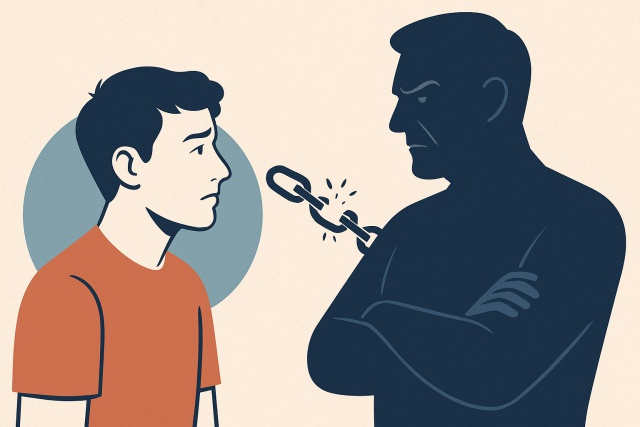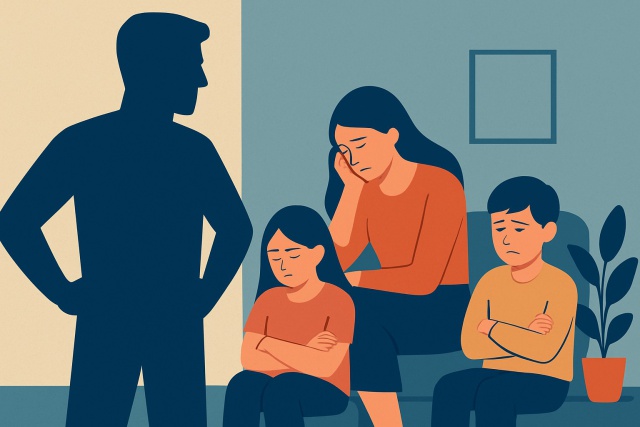
How to Talk to a Narcissist Without Losing Yourself
Discover practical, step-by-step strategies to communicate with narcissists confidently without sacr...
This article dives into how drawing clear personal boundaries can help you finally break free from codependency and build healthier and more balanced connections.
Overcoming codependency often starts with recognizing how it sneaks in and sets up unhealthy patterns in relationships, quietly chipping away at a person’s self-worth before they even realize it. Setting clear personal boundaries is usually the first big step toward breaking free from this tangled web.
Codependency is a behavioral condition where people often put others' needs way ahead of their own sometimes to the point of hurting their emotional and physical well-being. Common signs that someone might be caught in this include bending over backwards to please others, having a tough time saying no and constantly fishing for approval. These behaviors can trap a person in unhealthy relationship patterns.
Personal boundaries are invisible lines we draw around our emotional, physical and mental selves to keep a healthy space from being manipulated or overwhelmed by others. In codependent relationships these lines often get blurred or vanish completely. This is a fast track to feeling drained and harboring resentment. Setting clear personal boundaries doesn’t just protect your emotional well-being by defining what’s okay and what’s not
"Setting boundaries isn’t about shutting others out. It’s really about protecting your peace and reclaiming your personal power—something we all deserve, honestly." — Dr. Melody Beattie
Once you wrap up the self-assessment take a moment to really zero in on those situations that tend to leave you feeling a bit off or downright frustrated. More often than not, these are the subtle signs of boundary crossings.
Starting with self-awareness, recognizing your feelings is like turning on a light in a dark room—you suddenly notice boundaries you didn’t even realize were there before. Being clear about what you find acceptable really lays the groundwork for honest conversations which are key when it comes to expressing boundaries with confidence. Saying no can feel like a tough pill to swallow, but it’s absolutely vital in keeping manipulation at bay. Setting consequences shows you mean business, and sticking to them consistently is what really helps your boundaries stick around for the long haul.

Setting boundaries can often stir up guilt and anxiety and sometimes a bit of pushback from individuals who are not quite used to your newfound assertiveness.
Overcoming codependency starts with keeping healthy boundaries through ongoing self-reflection and dedication. With time they start to feel like second nature and quietly steer you clear of old codependent habits that sneak back when you're not looking. Embracing a growth mindset and staying close to positive role models who lift you up usually boosts your resilience.
Healthy boundaries are about finding the right balance between self-respect and flexibility. If you often feel isolated or rigid, your boundaries might be too tight. If you frequently feel drained or hold resentment, they could be too loose. It helps to check in with your emotions from time to time. Your boundaries should support you and not create a wall that pushes others away.
Negative reactions happen because people struggle with change since it is human nature. The best approach is to stay calm and clearly restate your boundary without over-explaining. If the pushback continues, consider limiting contact or seeking extra support. Remember, someone else’s discomfort doesn’t make your needs less important.
Absolutely. Boundaries are the remedy for putting others first at your own expense, which is central to codependency. They help you regain self-worth, reduce resentment, and promote healthier, balanced relationships. Being consistent is essential because regularly setting boundaries leads to greater independence and emotional stability.
It varies but many people start feeling less stressed within a few weeks. Real and lasting change often takes several months of steady effort, especially if codependency runs deep. Celebrate small victories like saying no without feeling guilty. Those moments are important signs of progress.
Self-help tools like setting boundaries can be effective but therapy provides personalized support when old patterns are deeply ingrained. If you’re stuck in cycles of guilt or repetitive habits, a therapist can offer useful tools and help keep you accountable. Support groups can also be valuable sources of encouragement.
Begin by paying attention to times when you feel resentful or exhausted since those feelings often indicate a boundary has been crossed. Keeping a journal or using self-assessment tools like the one mentioned in the article can help clarify your limits. Start small by setting low-pressure boundaries to build your confidence over time.

Discover practical, step-by-step strategies to communicate with narcissists confidently without sacr...

Discover the 7 critical signs of a narcissistic father and how understanding these behaviors empower...

Discover how narcissistic father traits shape family dynamics, affect emotional well-being, and infl...

Stalking personality traits often mask complex psychological issues. This guide helps therapists rec...